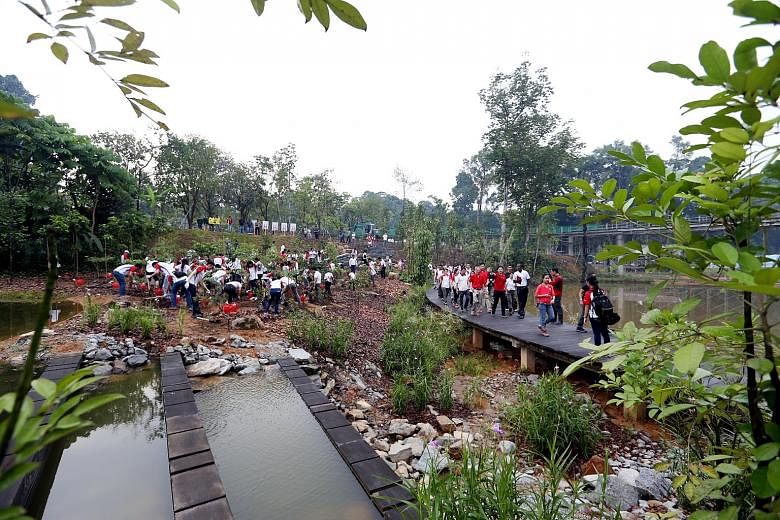Come early next year, the public can learn about one of Singapore's most endangered natural habitats, with the opening of the Keppel Discovery Wetlands in the Botanic Gardens, near the Tyersall Avenue entrance.
The 1.8ha attraction, being set up in partnership with Keppel Corporation as part of the Gardens' new Learning Forest, offers a user- friendly setting for people to get close to plants associated with the freshwater swamp forest.
It was launched yesterday by Minister for National Development Lawrence Wong.
Mr Wong said the Botanic Gardens may have been inscribed as a Unesco World Heritage Site, but it is "just the start of a lifelong journey".
"We need very careful deliberate planning to conserve the botanical wealth and the beauty of the Botanic Gardens for future generations," he added.
The project is an effort to restore the area's wetlands that had been drained by about 1920. Keppel has committed $2.08 million to supporting the restoration efforts under the Garden City Fund.
Keppel Corporation chairman Lee Boon Yang said: "We are starting on a very interesting and brave new project... We believe that Singapore's natural heritage is a precious resource and all Singaporeans share a responsibility to care for the environment."
Professor Leo Tan, chairman of the Garden City Fund, said the wetlands will give the public an opportunity to learn about Singapore's native biodiversity and conservation efforts. He added: "We hope that Keppel's support could inspire more organisations to join us in conserving our native flora and fauna for future generations."
The Wetlands will also facilitate research in restoration ecology.
More than 200 species of plants have been chosen for cultivation at the site to help conserve native species and highlight the distinctive characteristics of plants living in the freshwater swamp forest habitat.
Singapore has lost much of this habitat to development.
The remaining patch of natural freshwater swamp forest in Nee Soon in the Central Catchment Nature Reserve is in a restricted zone, near a military live-firing area.
The dense vegetation and wet conditions make it difficult for people to appreciate it.
The Botanic Gardens group director Nigel Taylor said the team restored flood conditions at the Keppel Discovery Wetlands by constructing weirs to impede drainage and accumulate water.
Most of the water is from direct rainfall and overland flow, while some originate from a natural spring at the foot of a nearby slope.
Dr Taylor said of the spring: "It supplies about an Olympic swimming pool's worth of water every month." This is a relatively small contribution, but becomes important during dry seasons, he added.
Other features of the Wetlands include the Botanists' Boardwalk, lined with plants discovered by great botanists such as Henry Ridley and E.J.H. Corner, and the Orchid Islands showcasing orchid species that make their home in freshwater swamp forests. Boardwalks and an elevated walkway will help visitors keep their feet dry.
Yesterday, Mr Wong, Dr Lee and Keppel Corporation chief executive Loh Chin Hua planted a Keppel tree, or Stelechocarpus burahol.
The tree's fruits are said to have been a favourite of Javanese princesses in the old days.
Nearly 50 Keppel staff planted various tree species to kick off a volunteer programme to plant more trees during the Wetlands' development.
Lin Yangchen


